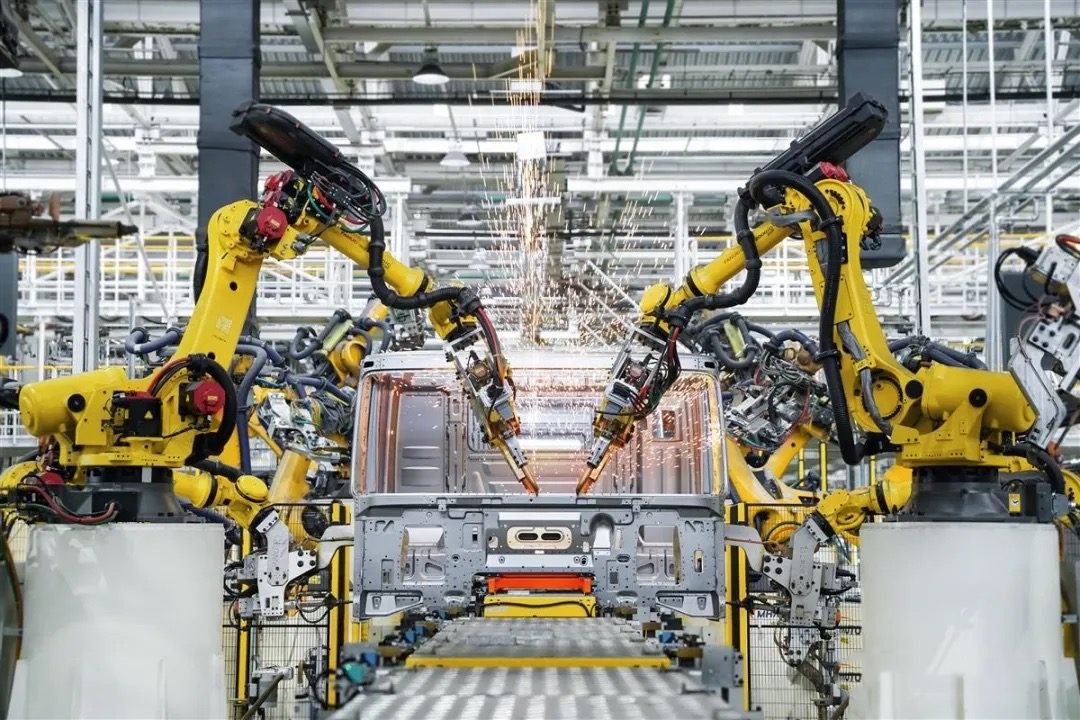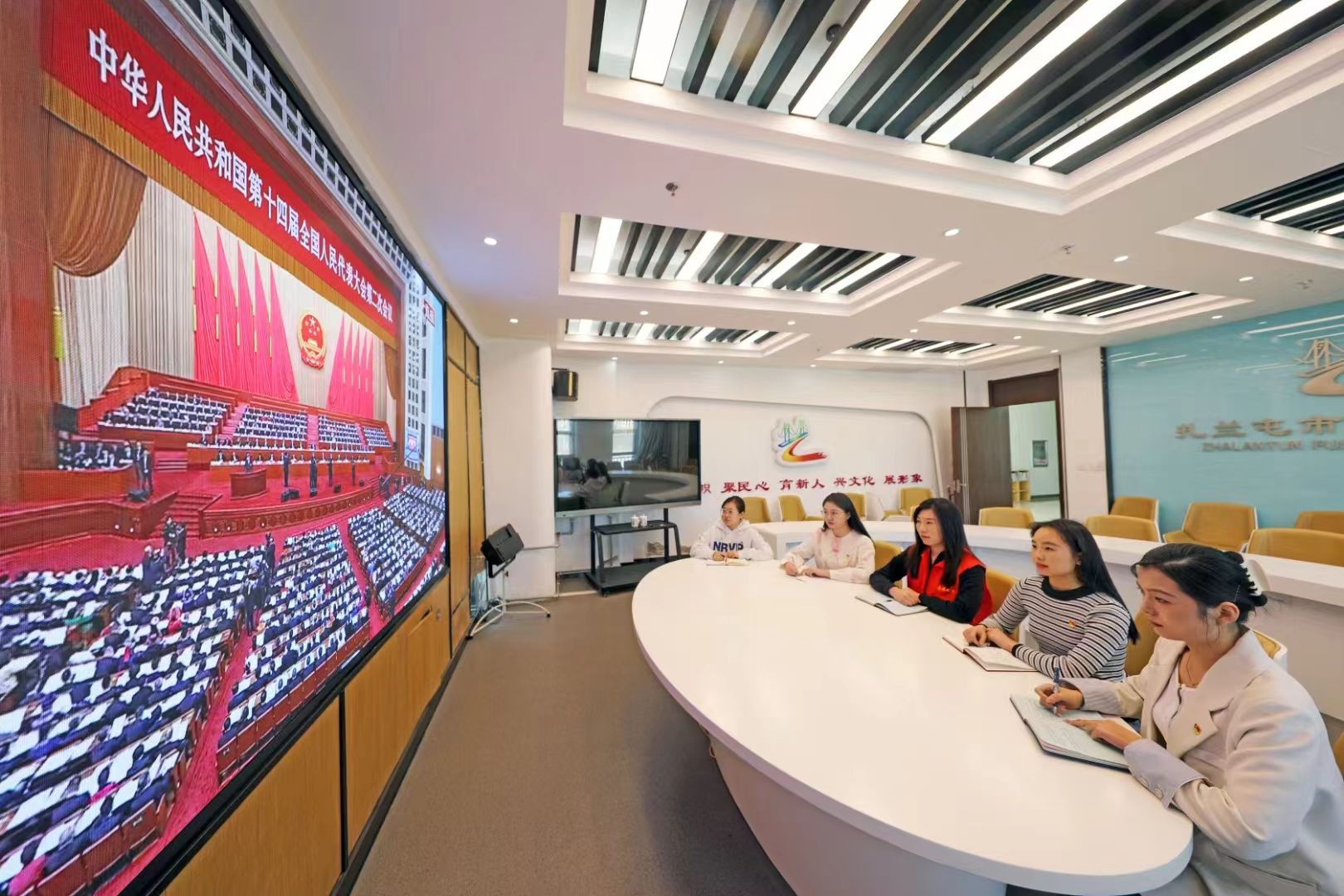Eco-friendly mining helps drive environmental cleanup
Rehabilitation and afforestation programs are transforming badly scarred landscapes. Yuan Hui reports from Hohhot with Hou Liqiang in Beijing.
Editor's note: As protection of the planet's flora, fauna and resources becomes increasingly important, China Daily is publishing a series of stories to illustrate the country's commitment to safeguarding the natural world.
In Xiao Cunhai's memory, the mountains around his home village were shaped like "huge chicken claws" as they were dotted by gullies of various sizes.
The area also had poor vegetation coverage. "When the wind rose in spring, the loess soil would be blown up and fly everywhere," recalled the 45-year-old from Sanbaoyaozi, a village in Juungar Banner, Ordos, Inner Mongolia autonomous region.
Now the "huge chicken claws" are no longer visible. Instead, the area is covered by apple trees and grapevines. "I never imagined that the place could be transformed into what it is at present, with the blue sky and green land," Xiao said with a smile.
Locals like Xiao have not only benefited environmentally, but also financially. Working in the orchard near his home, Xiao can make 150,000 yuan ($21,000) a year.
The stark contrast he described is due to the Dafanpu Mine, which has operated in the area since 2012, producing 6.5 million metric tons of coal every year.
As China forges ahead with advancing ecological civilization and rural vitalization, the mine, together with many other similar facilities in the area, is a microcosm of the synergy that can be generated when the two campaigns are promoted simultaneously.
Ecological civilization
Ecological civilization is a concept promoted by President Xi Jinping that aims to provide balanced, sustainable development and features the harmonious coexistence of humanity and nature.
Though China is not able to phase down coal consumption — which accounts for over 90 percent of its fossil fuel reserves — in the short term, mining is being conducted in a more environmentally friendly manner, with minimal pollution and environmental damage. This is illustrated by mines in Ordos, one of the country's main coal-producing areas.
Since the establishment of the Dafanpu Mine, the company that operates it — Inner Mongolia Juungar Banner Liliang Coal Industry — has made consistent efforts to afforest the surrounding area.
To date, about 100,000 trees have been planted across almost 160,000 square meters, said Li Bo, the company's chairman. Grass seeds have also been sown across 680,000 sq m, thus afforestation work has taken place everywhere conditions permitted, he said, noting that the company has invested about 61 million yuan in such efforts.
To better promote the remediation of the mine's subsidence area and explore its use, the company set up an agricultural subsidiary named Liangyun in 2018. That was about a year after six national government departments, including the then-Ministry of Land and Resources, jointly issued a guideline promoting the development of green mines.
The old ministry was integrated into the Ministry of Natural Resources as part of a 2018 institutional reshuffle of the State Council, China's Cabinet.
The 2017 guideline demanded that all new mines nationwide must operate in an environmentally friendly manner. Meanwhile, existing facilities are gradually being upgraded to move them onto a green development track.
The document specified the fundamental requirements for green mining construction in seven sectors, including coal, petroleum and nonferrous metals.
In the coal sector, for instance, operators are required to adopt innovative, environmentally friendly methods. To reduce pollution, they must minimize land use and the amount of coal gangue (commercially worthless material) that is transported out of the mines, and take a range of measures to control surface collapse.
In areas with fragile ecosystems in the country's western regions, coal mining should be conducted with methods that favor the conservation of water and soil, while at least 85 percent of the wastewater generated in mines should be reused, the document said.
According to a March report by China Natural Resources News, more than 1,100 mines nationwide have been listed as national-level green mines, including the Dafanpu Mine, which made the list in 2019.
Li said that after the establishment of the agricultural subsidiary, grapevines, apple trees and vegetables were introduced to develop eco-agriculture as a way of rehabilitating the mining areas.
"We aim to leave future generations and local residents a green and sustainable industry," he said.
According to Liliang, Xiao is one of 80 locals who work as regular employees for its Liangyun subsidiary, with each person earning an average of 60,000 to 70,000 yuan a year.
Meanwhile, about 100 extra villagers are hired during the busy harvest season, with each worker earning 240 yuan a day, it said.
To date, more than 33 hectares of wine grapes, 40 hectares of apple trees and about 6.7 hectares of vegetables have been planted in the mining area, Li said. A winery with an annual production capacity of 200 tons is under construction and is expected to become operational in September.
Li said the company expects to see annual income of about 10 million yuan from both the winery and apple programs in 2028.
Meanwhile, by 2027, the apple orchard will be expanded to 66.7 hectares, producing more than 2,000 tons of produce a year, according to the company.
It said that it will explore a rural vitalization model to operate the apple orchard, and it will feature cooperation between businesses, village collectives and households.
Moreover, cooperatives will be established between the coal mine and villages to promote the planting of apple trees in other areas and create a win-win for the company and local communities.
The grapevines and apple trees have now transformed the "chicken claws" into lush mountains. In fact, visitors will find few clues to indicate that the area is a coal mine, as all its operations, ranging from production, storage to coal washing to transportation, are conducted in sealed conditions and no coal is ever visible.
Remedial measures
At the Minda Coal Mine which stretches for about 20 square kilometers in Ordos' Dongsheng district, rehabilitation programs have been rolled out since the open-pit facility started operations in March 2009, according to Jia Xudong, an executive with Minda Eco-agriculture, a subsidiary of the mine. "Once mining is finished in a plot, the remediation work begins," he said.
Thanks to the various agricultural activities, the mine looks like an orchard, even though it is still operating normally.
The 30,000-plus, apple, peach, pear, apricot and date trees, and grapevines, have borne fruit, making the scene extremely colorful.
More than 17,000 pigs, chickens, horses, cows and goats roam a separate area. There are also four fishponds around the mine, plus about 270 greenhouses.
Jia said the eco-agriculture company employs 150 people, with roughly 70 percent of them being local residents.
In the wake of the 2017 guideline on the promotion of green mine construction, the Manlailiang Coal Mine in Manlai village in Ordos' Ejin Horoo Banner has also been making efforts to transform itself into a green facility.
The mine, which started operations in 2017, has an annual production capacity of 5 million tons.
Previously, the mine's operators sowed grass seeds as a way to rehabilitate the area. "After the guideline was released, we introduced even higher standards into the remediation program in accordance with the requirements for green mines," said Wu Runbiao, the mine's head.
"We aim to not only afforest the mining areas, but also generate social benefits."
In addition to planting landscaped woods, the company has introduced eco-agriculture projects to benefit local residents, Wu added.
For example, for one of the projects, named Huangshangliang, the company plans to invest about 20 million yuan to develop an agri-tourism resort that will combine catering, entertainment, healthcare, farming and breeding businesses.
"After we have made all the investment, the project will be transferred to the village for management. The profits will all belong to the residents," Wu said.
According to the company, part of the project opened for business in June last year, but it will become fully operational next year. More than 10 sq km of mining areas have so far been remediated in the facility.
Many villagers are already benefitting environmentally and financially as construction of the green mine continues.
"I grew up here. In my memory, it was a desolate area, windy and dusty in spring," said villager Li Zeng. "Now, thanks to the afforestation efforts, huge changes have occurred."
The village committee contracted an afforestation project from the coal mine last year. Zeng made 8,500 yuan a month from March to December last year by working as a bulldozer driver at the project, the 39-year-old said.
He has also been engaged in a new afforestation project since March. Together with the money he makes from his farmland, his family's annual income now amounts to 180,000 yuan, he said.
"Many villagers are taking part in the afforestation project, Some plant trees, some sow grass seeds. We are all very happy," he said.
"I used to work on construction sites and in coal mines in other areas. Now, I work just on my doorstep. That's really good news."



 Print
Print Mail
Mail





